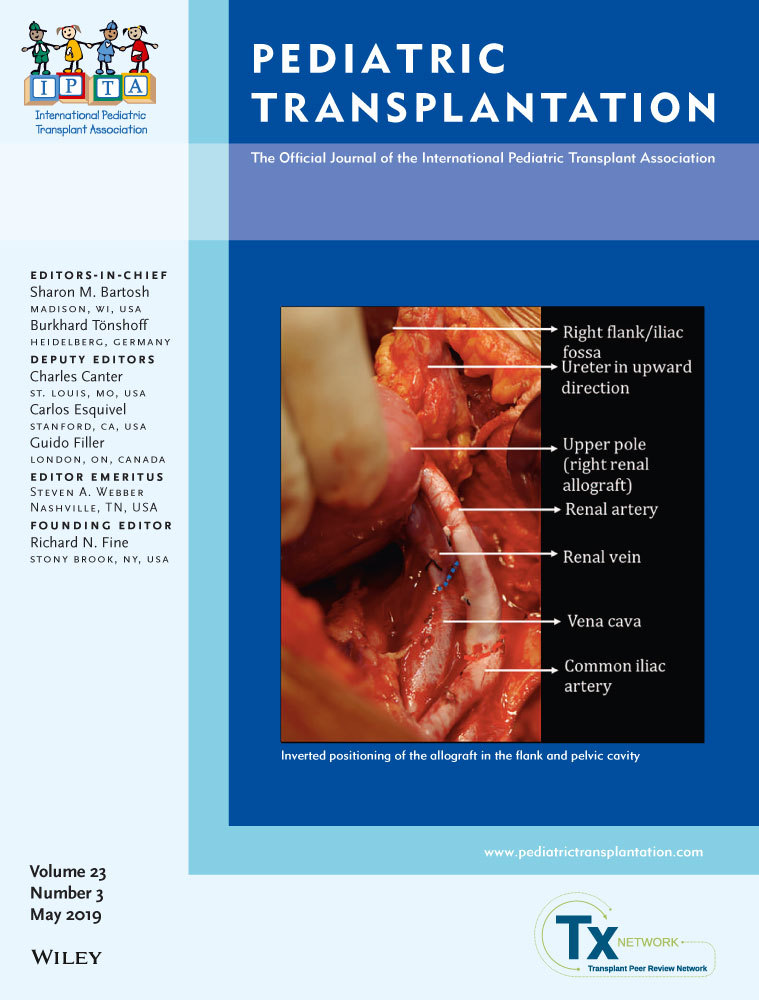“Inverted” positioning of renal allograft during kidney transplantation in children and adolescents: A single-institution comparative analysis
Abstract
Renal transplantation is the treatment of choice in children with end-stage renal failure. Limitations in patient anatomy or a short donor renal vein may necessitate intraoperative inversion of the kidney. There is little evidence to support the use of this surgical technique, and no evidence in the pediatric population. This study identifies the perioperative and post-operative outcomes of inverted renal transplants in pediatric patients. We reviewed all patients having a renal transplant between January 2012 and December 2016 and collected short- and long-term outcomes of patients who received an inverted allograft. Early graft function was defined as the time to reach creatinine nadir. During this time, our hospital performed 81 transplants, and 50 (62%) were from deceased donors, including the 6 (12%) patients who received inverted renal grafts. Half (3/6) were female, 5/6 (83%) were dialysis-dependent, and the median age at surgery was 13 years (range 9-16 years). There was no significant difference in mean creatinine nadir values (P = 0.518) and the time to creatinine nadir mean values (P = 0.190) between the upright and inverted renal transplant groups. There were also no significant differences in rates of post-operative complications between the upright and inverted allograft recipients. Inversion of renal allografts in pediatric patients is a viable surgical technique to compensate for shortcomings in patient anatomy or in special cases of renal transplantation involving a short donor renal vein. Future research should focus on outcomes of a larger group of pediatric inverted renal transplant patients.




